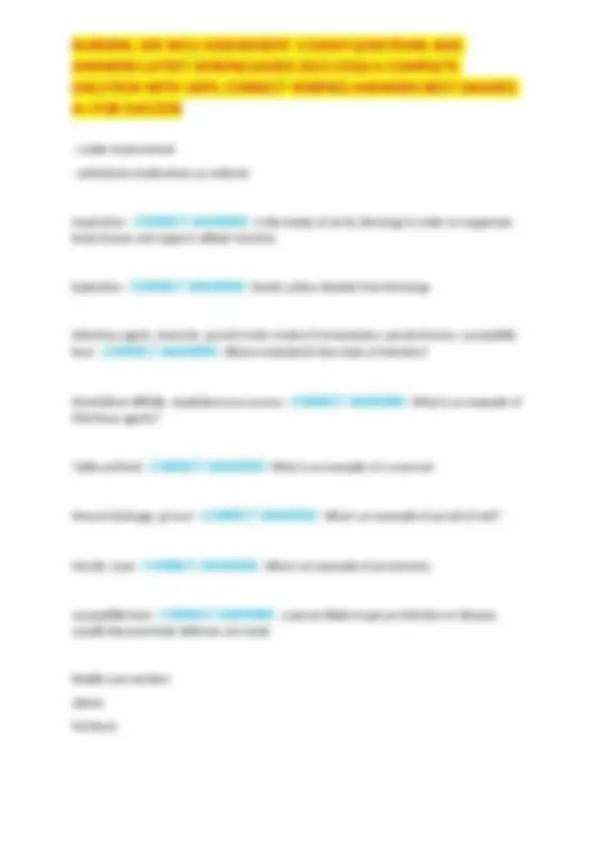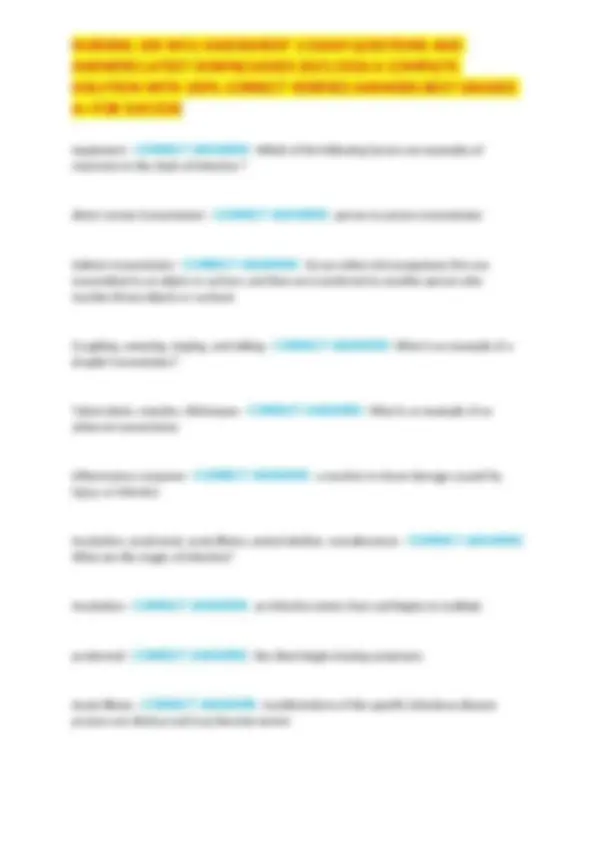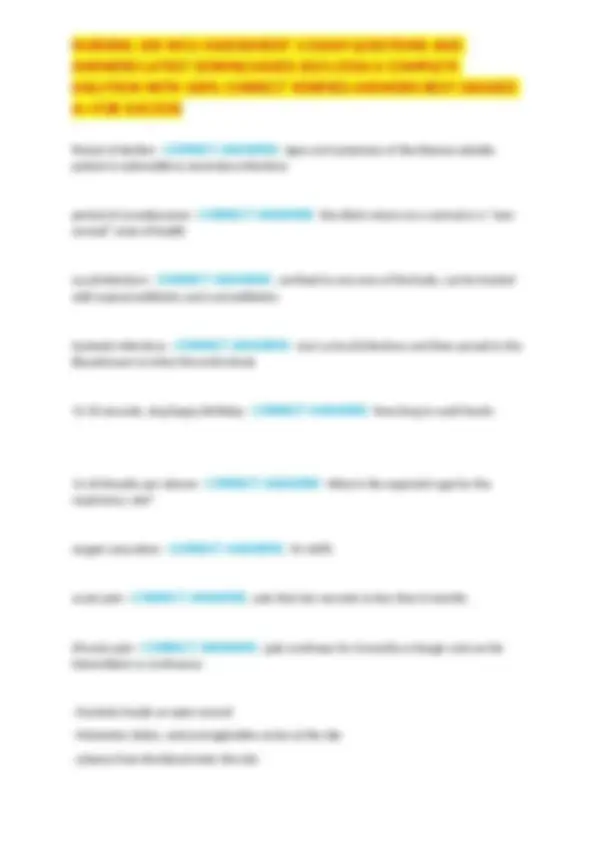





Study with the several resources on Docsity

Earn points by helping other students or get them with a premium plan


Prepare for your exams
Study with the several resources on Docsity

Earn points to download
Earn points by helping other students or get them with a premium plan
Community
Ask the community for help and clear up your study doubts
Discover the best universities in your country according to Docsity users
Free resources
Download our free guides on studying techniques, anxiety management strategies, and thesis advice from Docsity tutors
NURSING 100 WCU ASSESSMENT 1 EXAM QUESTIONS AND ANSWERS LATEST DOWNLOADED 2025/2026 A COMPLETE SOLUTION WITH 100% CORRECT VERIFIED ANSWERS BEST GRADED A+ FOR SUCCESS
Typology: Exams
1 / 7

This page cannot be seen from the preview
Don't miss anything!




Medical asepsis - CORRECT ANSWERS Cleaning technique practice that reduces the presence of disease causing surgical asepsis - CORRECT ANSWERS techniques used to destroy all pathogenic organisms, also called sterile technique Standard precautions - CORRECT ANSWERS Infection prevention practices that apply to all residents regardless of infection status contact precautions - CORRECT ANSWERS precautions used when a client has an infectious agent that can be transmitted by direct or indirect contact with body secretion; requires a min of gown and gloves prior to client interactions systolic blood pressure - CORRECT ANSWERS the point on the manometer at which the nurse hears the first Korotkoff sound is diastolic pressure - CORRECT ANSWERS The point on the nanometer at which the Koritkoff sounds are no longer audible is the Tachycardia - CORRECT ANSWERS pulse greater than 100 bpm Bradycardia - CORRECT ANSWERS slow heart rate (less than 60 bpm)
nursing interventions for hypertension - CORRECT ANSWERS - encourage the client to adopt lifestyle interventions such as exercise, stress reduction, low-sodium diet, and weight loss if needed
equipment - CORRECT ANSWERS Which of the following factors are examples of reservoirs in the chain of infection? direct contact transmission - CORRECT ANSWERS person to person transmission indirect transmission - CORRECT ANSWERS Occurs when microorganisms first are transmitted to an object or surface, and then are transferred to another person who touches those objects or surfaces Coughing, sneezing, singing, and talking - CORRECT ANSWERS What is an example of a droplet transmission? Tuberculosis, measles, chickenpox - CORRECT ANSWERS What is an example of an airborne transmission inflammatory response - CORRECT ANSWERS a reaction to tissue damage caused by injury or infection incubation, prodromal, acute illness, period decline, convalescence - CORRECT ANSWERS What are the stages of infection? Incubation - CORRECT ANSWERS an infection enters host and begins to mulitply prodromal - CORRECT ANSWERS the client begins having symptoms Acute illness - CORRECT ANSWERS manifestations of the specific infectious disease process are obvious and may become severe
Period of decline - CORRECT ANSWERS signs and symptoms of the disease subside; patient is vulnerable to secondary infections period of convalescence - CORRECT ANSWERS the client returns to a normal or a "new normal" state of health Local infections - CORRECT ANSWERS confined to one area of the body, can be treated with topical antibiotics and oral antibiotics Systemic infections - CORRECT ANSWERS start as local infections and then spread to the bloodstream to infect the entire body 15-30 seconds, sing happy birthday - CORRECT ANSWERS How long to wash hands 12-20 breaths per minute - CORRECT ANSWERS What is the expected rage for the respiratory rate? oxygen saturation - CORRECT ANSWERS 95-100% acute pain - CORRECT ANSWERS pain that last seconds to less than 6 months Chronic pain - CORRECT ANSWERS pain continues for 6 months or longer and can be intermittent or continuous